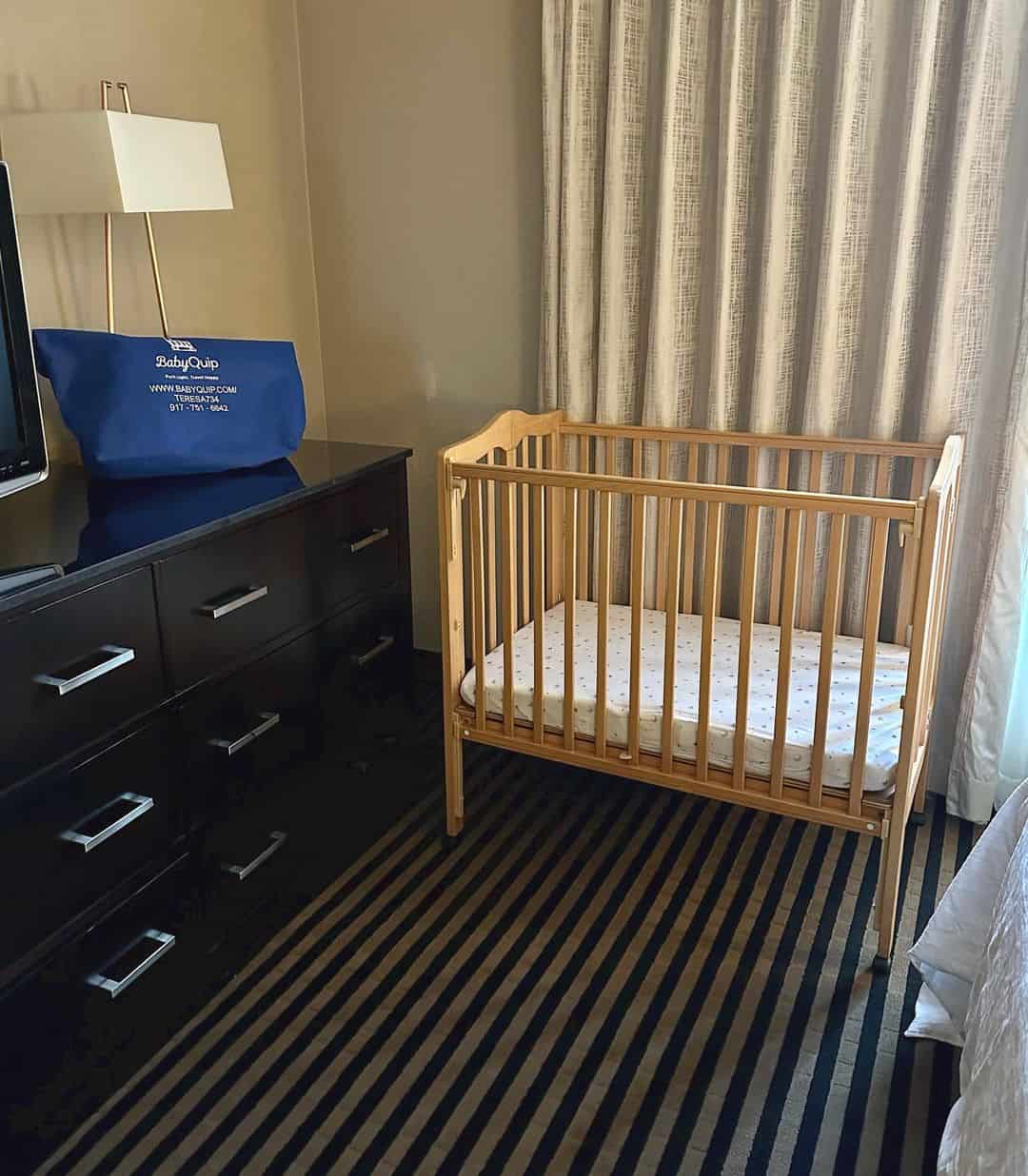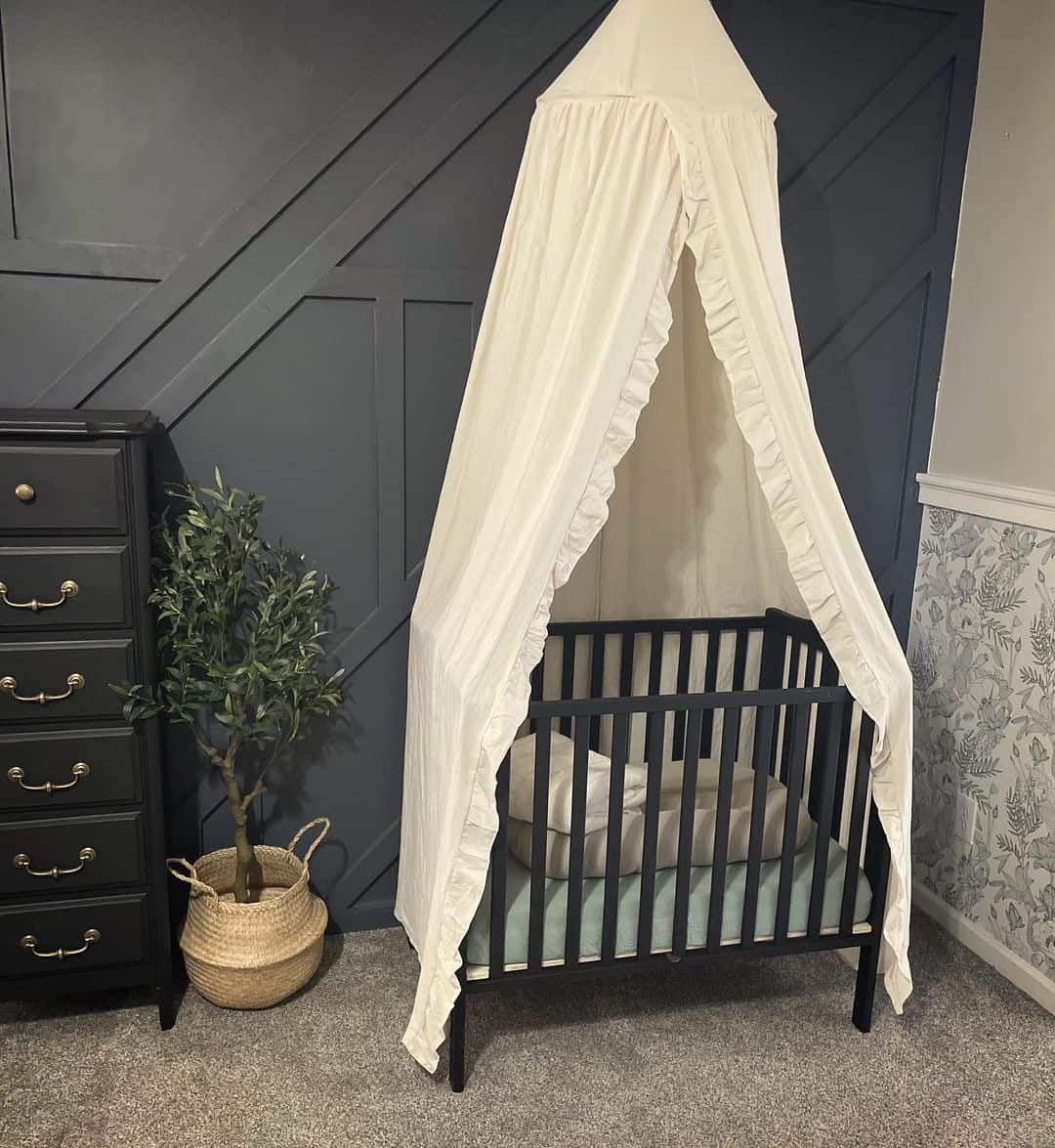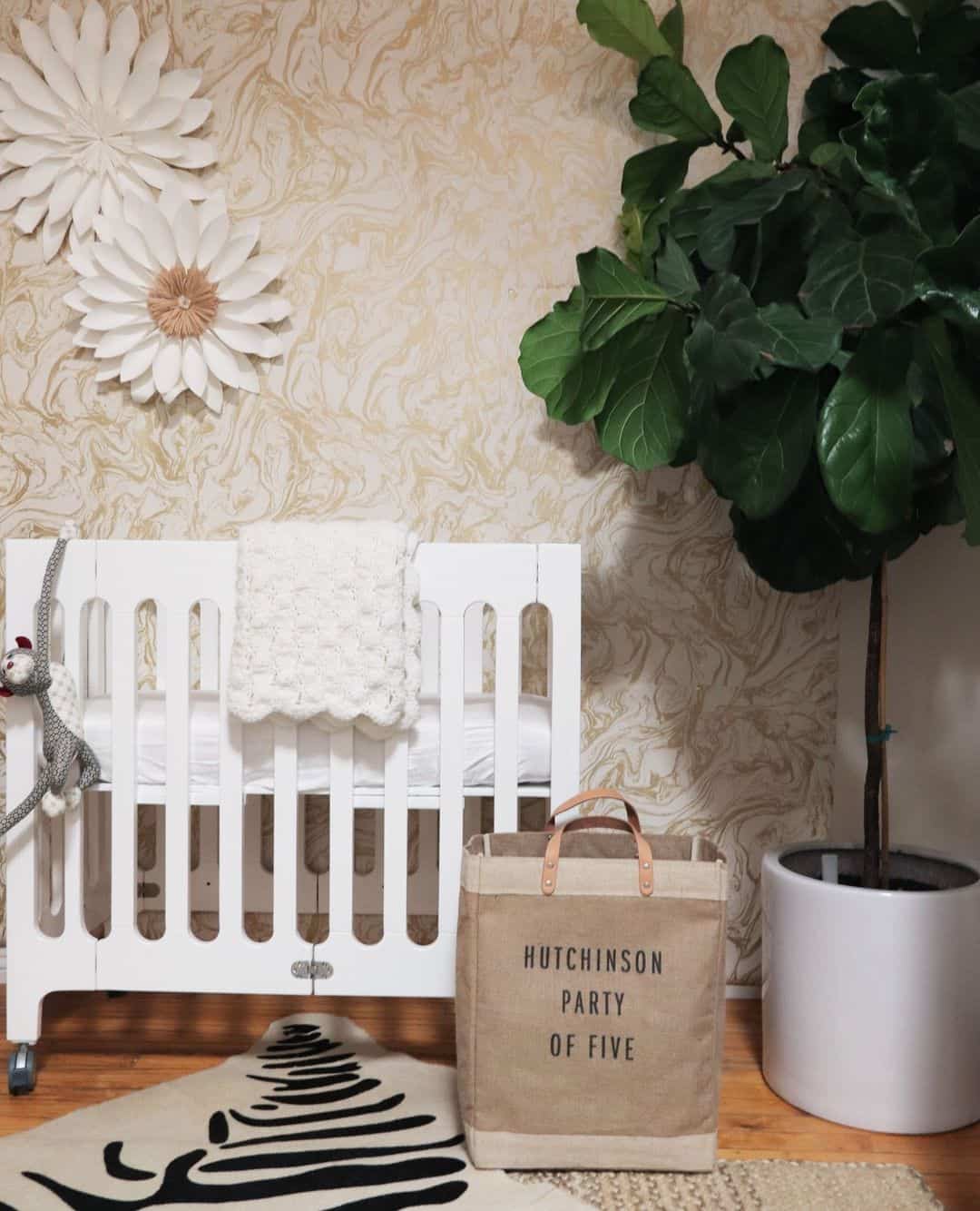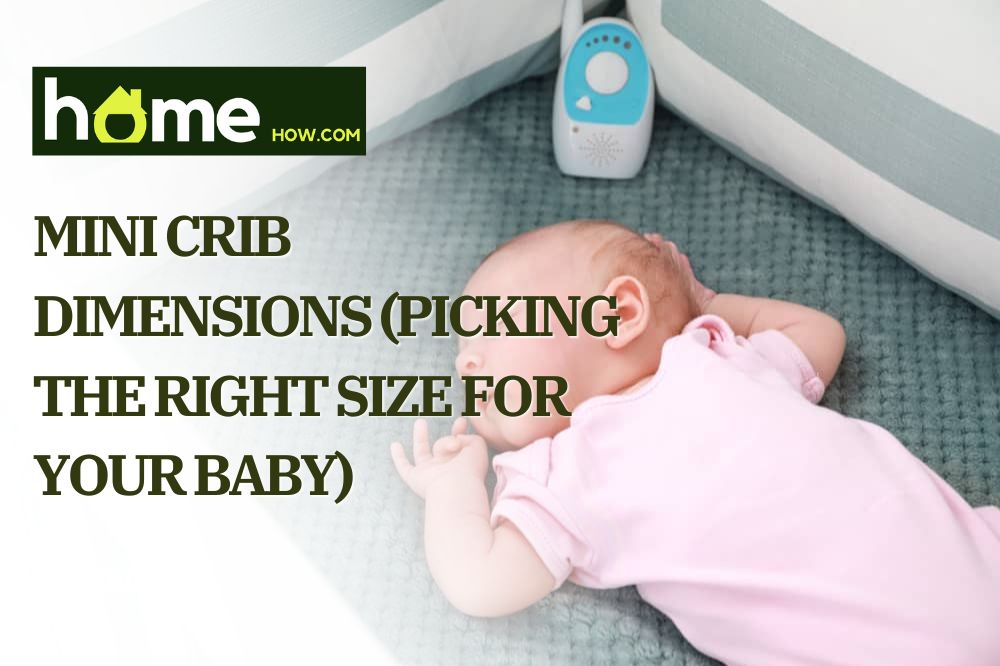Starting a family is one of the most important decisions in your life. You will want the best for your little one, especially where they will sleep. Many parents need help selecting the right crib for their babies, and because cribs are typically expensive, they want to make the right choice.
However, knowing the difference between a mini crib and a regular crib is crucial in making an informed decision. It is easy to make the mistake of picking a crib bigger than you had in mind because they all look the same.
Therefore, this article explains what a mini crib is and its dimensions. Armed with this information and guide, you will have an easier time identifying and choosing the best mini crib for your baby.
What a Mini Crib Is
A mini crib is the smallest type of crib for newborns you will find in the market. It is also called a portable crib because it is usually lightweight and comes with wheels. The wheels make it easy to move the crib from one room or place to another, unlike the standard crib type.
Mini cribs are an excellent choice if you have a small nursery or space to manage. A mini crib will be an alternative that serves you well without taking up too much space. Besides, you can always fold and store it when not in use to create more space around the house.
Dimensions of a Mini Crib
A mini crib is noticeably smaller than a standard or regular crib. The standard size and dimensions of a regular crib are:
- Length: 51 ⅜ – 52 ⅝
- Width: 27 ⅜ – 28 ⅝
A full-size crib has the traditional design you will find on most cribs on display. Most of what you see in catalogs and magazines or shop fronts are cribs that may be too big for your home if you want a smaller bed.
On the other hand, a mini crib has the following dimensions:
- Length: 37 ⅜ – 38 ⅝
- Width: 23 ⅜ – 24 ⅝
The difference between a regular crib and a mini crib is quite obvious, more so when you check the length of each crib. That means a mini crib can only hold an infant for a few months, whereas a standard crib can sleep a baby for much longer.
A standard crib can hold your baby for about 24 months or two years, depending on the growth rate, but a mini crib can only hold them for about 10 to 12 months. This also depends on the baby’s growth rate.
Is There a Uniform Size for All Mini Cribs?

There is no uniform size for all mini cribs. Note that some mini crib sizes are slightly bigger than the listed dimensions. Some are 40 inches long and 25 inches wide. The size you buy will depend on the available space, your baby, and the specific design you want.
The difference in the dimensions of all mini cribs is not significant, so it may be a little difficult to tell if there is any difference unless you have specific measurements.
If unsure, measure the space where you plan to put the crib to get exact dimensions. Then, you can make an informed decision when you select in stores or online.
The same rule applies to the mattress used in both types of cribs. While a standard crib mattress has a length of 52 inches and a width of 27 inches, a mini crib can only hold a mattress with a length of 38 inches and a width of 24 inches.
The thickness of the mattress in a typical standard-sized crib is usually about five to six inches, while the thickness of a mini crib mattress is typically three to four inches.
Features to Check for in a Mini Crib

kelsey.gaumond
Before selecting any crib, several features make it ideal for your baby and home. This is especially true for a mini crib if you are opting for it because of space. While you may want this type of crib for its convenience, remember that it must also be safe for your baby.
Therefore, check the following features to help you select the best mini crib for your baby:
1. Safety
Your crib of choice must be safe for your baby, even when you are not there. The point of putting your baby in a crib is to promote independent sleep. It also gives you space to sleep without worrying about rolling over on your baby.
Therefore, the crib must meet all the safety standards and regulations or exceed them, according to the Consumer Products Safety Commission. There must be proof of testing to show that it is safe for use, and the manufacturing materials and other accessories must not be toxic.
Your baby is delicate and must be protected from harmful substances. If unsure, check online resources around the brand and see what people have to say. Otherwise, select a more credible brand.
2. Size
Keep the size of your baby in mind and note the growth rate before opting for a mini crib. While most mini cribs are less expensive than regular cribs, it would be a waste of money to buy a mini crib that your baby quickly outgrows.
If you cannot tell how fast your baby will grow or you are shopping for a mini crib before the baby comes, it may be best to buy the largest one. The biggest mini crib will still take up less space than a regular crib. Besides, your baby may use it for longer, putting the crib to better use.
3. Accessories
Many cribs come with an included mattress, but not all of them come with this accessory. For some, the cribs come with a mattress pad that looks like a mattress but is not.
If you are not careful or observant, you may think the crib comes with a mattress, but the pad is not enough to support your baby. It is crucial to inspect the cribs and touch the included mattresses to ensure they are mattresses and not pads.
The mattress must be at least three inches thick but can go up to six inches. This is the best support your baby can have when sleeping in a crib. Therefore, you must select the right crib mattress size.
Since it comes as one package, a mini crib with a mattress will save you the money you would have spent on buying a separate one. This is particularly necessary if you are on a tight budget.
4. Adjustability

For the best results, adjustable mattress heights in the crib are necessary. This feature allows you to change the position of the mattress to accommodate your child for longer as they grow.
While this is not a deal breaker, adjustable mattress positions may help you in the long run if your baby grows faster than anticipated. That way, you do not have to cut their crib time or have them sleep in your bed before you are ready.
5. Design
Another key feature to consider is the design. Many mini cribs have a durable collapsible and convertible design, but you will not find it with all mini cribs. If a mini crib is not collapsible, it may defeat the purpose of wanting one because it does not make for easy storage.
However, if it is not a convertible crib, it is usually not a deal breaker. A convertible design means that the bed expands or converts into a twin bed or toddler bed. That means your child can use the same bed through these transitions, saving you space and money. Only a few brands have this design, so you may not easily find it.
6. Air Circulation
Some cribs have wooden boards on the sides instead of rods that allow you to see the baby. If you want that design, it is important to note that it may not encourage excellent air circulation. The best design is the rods on every side because of better airflow and eliminates suffocation risk.
You may be concerned that your baby may get stuck in the bars if they put their head or limbs through it. But you can add a few rods between spaces to reduce the gaps and make such an incident impossible. Besides, your baby may feel safer in the crib if they can see you while lying in it.
7. Portability
One of the perks of using a mini crib is that you can move it from place to place by rolling it on its wheels. Many mini cribs come with wheels to make movement easier. However, there must be a lock feature on the wheels so you can prevent the crib from rolling without supervision.
Ensure you check for this feature, especially if you want to purchase the crib from the used goods market. If there is none, go to the next option.
Conclusion
Knowing the dimensions of a mini crib is crucial in deciding what size fits your baby and space. It may also determine the price, but that is not always the case. You can tell the difference between a regular crib and a mini crib armed with this information so you can choose the right type.
A mini crib is usually about 25 inches wide and 40 inches long. There is no uniform size for this crib type, so some may have slightly smaller dimensions. Apart from the size, the crib’s safety, adjustability, and portability are some other features to consider before choosing.
